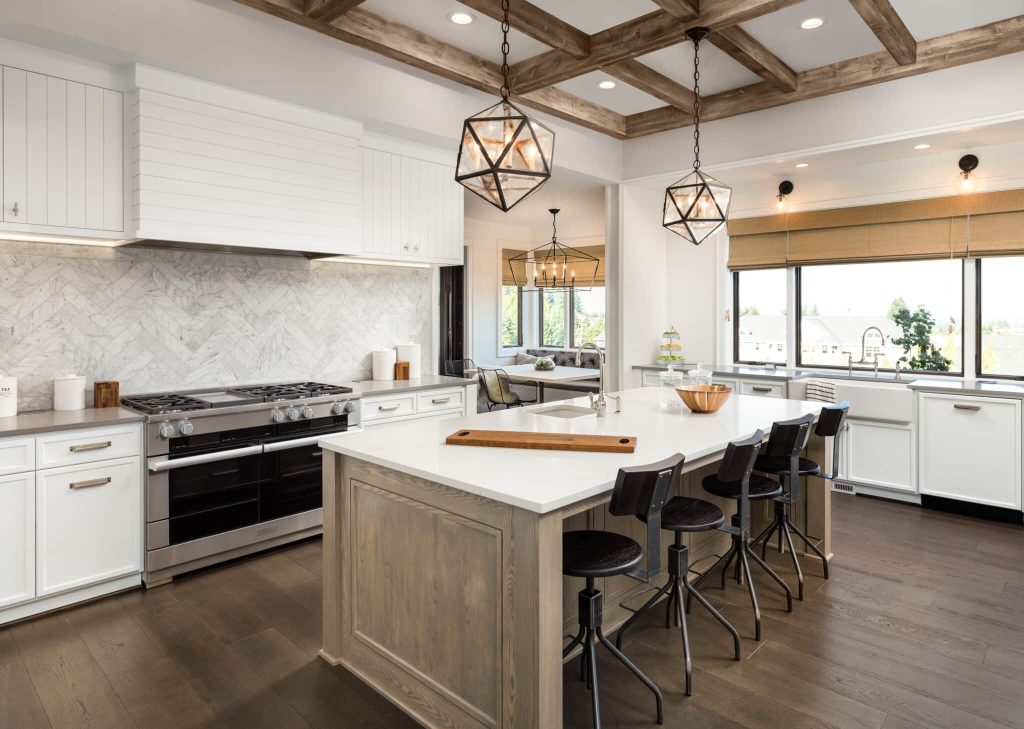The Simple Aesthetics in Food: How Minimalism Can Transform Your Cooking Habits

Exploring Minimalism in Culinary Arts
In a world saturated with culinary complexity and extravagant presentations, minimalism in food offers a refreshing perspective. This approach emphasizes simplicity, inviting both beauty and functionality into our cooking practices. By focusing on the essentials, we can enhance not only our meals but also our overall cooking habits, resulting in a more satisfying and less stressful experience in the kitchen.
Benefits of Embracing Simple Aesthetics
Consider the multifaceted benefits of embracing simple aesthetics in food:
- Clarity and Focus: Minimalism encourages us to prioritize taste and quality over excessive ingredients. For instance, a classic Caprese salad made with just ripe tomatoes, fresh mozzarella, basil, olive oil, and balsamic vinegar epitomizes this philosophy. The focus remains on the freshness and quality of each ingredient, rather than overwhelming flavors competing with one another.
- Visual Appeal: Clean, uncluttered presentations make dishes more attractive and inviting. The concept of plating, where food is arranged in an aesthetically pleasing manner, is enhanced by minimalism. A carefully arranged dish with ample white space can be more enticing than a crowded plate, as it allows the vibrant colors and textures of the food to shine through. Think about the shimmering colors of a vegetable stir-fry served in a simple, sleek bowl.
- Cooking Efficiency: Fewer ingredients lead to less time spent on prep and cleanup. With a minimalist approach, you can streamline your grocery list and meal prep, making it easier to whip up dinner after a busy day. For example, a one-pan meal using chicken, seasonal veggies, and herbs not only simplifies the cooking process but also reduces the mess, making it a win-win scenario.
Minimalism and Modern Eating Trends
As Americans increasingly seek health-conscious and sustainable eating habits, simple aesthetics align perfectly with these values. This means favoring locally-sourced, organic ingredients and reducing food waste—a central tenet for many minimalist cooks. Emphasizing dishes like grain bowls or sheet-pan dinners not only underlines wholesome ingredients but also highlights their inherent flavors, reminding us of the joys of cooking with fresh produce.
By embracing minimalism in food, we can transform our culinary practices into something more than mere sustenance—it becomes a form of art. This transformation extends beyond the plate into our kitchens and lives, allowing us to rediscover the joy of eating and cooking through simplicity.
Practical Tips for Applying Minimalism in the Kitchen
Interested in applying minimalism to your cooking? Start by exploring different ingredients, and experiment with less. Try crafting meals that focus on one or two main components, allowing their flavors to take center stage. You might find that instead of layering numerous sauces and spices, a simple seasoning of salt and pepper elevates the dish. Consider adopting the practice of cooking seasonally—using what’s fresh in your region not only enhances flavors but also reduces your environmental footprint.

As you dive deeper into this culinary philosophy, you may very well discover that less truly is more in the kitchen. When you strip away the excess, you can cultivate a cooking style that is not only practical but also deeply satisfying.
DISCOVER MORE: Click here to explore essential tools for better time management
Turning Down the Noise in the Kitchen
In today’s fast-paced culinary landscape, where food trends come and go in a blink, minimalism in cooking serves as an antidote to the excess that often defines our dining experiences. This thoughtful approach isn’t just about a reduction in ingredients but rather a celebration of what is truly essential. By honing in on fewer elements, cooks are encouraged to forge deeper connections with their ingredients and their culinary creations. This shift not only transforms the act of cooking but also redefines the very experience of eating.
Connecting with Quality Over Quantity
Embracing simple aesthetics allows chefs and home cooks alike to focus on the quality of ingredients. Instead of reaching for a host of seasonings or embellishments, minimalist cooking emphasizes the importance of sourcing high-quality, seasonal produce. This can lead to more flavorful and nutrient-rich meals. Consider a dish where a couple of thoughtfully chosen ingredients shine: a perfectly ripe avocado drizzled with quality olive oil and sprinkled with sea salt can deliver a burst of flavor that far surpasses a more complex dish laden with multiple sauces and toppings. When we prioritize quality, we not only enhance taste but also foster a deeper appreciation for the food we consume.
Enhancing Sensory Experience
Minimalism encourages a tactile relationship with food. By simplifying our recipes and presentations, we create opportunities to appreciate the colors, textures, and aromas of our meals. A well-constructed plate with a limited number of elements can be visually stunning, drawing attention to the vivid hues of freshly sliced vegetables or the inviting sheen of a perfectly cooked protein. This sensory engagement transforms eating from a mundane task into a delightful ritual. Think of a fresh fruit platter, artfully arranged with various melons, berries, and citrus, inviting diners not just to taste, but to savor each bite in its purest form.
Creating a Mindful Cooking Experience
The minimalist approach advocates for mindfulness in the kitchen. By reducing clutter—both in our ingredient lists and kitchen environments—we invite a calming atmosphere that can enhance our culinary creativity. Instead of rushing through meal prep, adopting a simpler aesthetic encourages cooks to slow down, savor the process, and find joy in each step. Here are several practical tips to cultivate mindfulness through minimalism:
- Plan Ahead: Take time to plan meals around a few quality ingredients, allowing room for creativity while maintaining simplicity.
- Embrace Seasonal Cooking: Utilize what’s in season to inspire recipes that are naturally aligned with minimalism.
- Declutter Your Kitchen: Keep only essential tools and ingredients accessible to foster a more efficient cooking environment.
- Experiment with Texture: Consider recipes that provide variety through texture rather than an overload of flavors.
As you explore this multifaceted approach to cooking, you will likely discover a newfound appreciation for the simplicity that minimalism promotes. By allowing flavors to stand out on their own, you can enjoy cooking in a way that is not only rewarding but also therapeutic, making meals more enjoyable for both yourself and those you share them with.
| Advantage | Description |
|---|---|
| Simplicity in Ingredients | Minimalist cooking promotes the use of fewer, high-quality ingredients, resulting in flavorful and vibrant dishes. |
| Reduced Cooking Time | With fewer components to prepare, meals can be made faster, leading to more enjoyable cooking experiences and less stress in the kitchen. |
| Enhanced Presentation | Minimalism invites a focus on the visual aspects of food, creating stunning plates that elevate the dining experience. |
| Better Focus on Flavor | By using fewer ingredients, the true taste of each component is highlighted, allowing for a deeper appreciation of flavors. |
In embracing the simple aesthetics of food, home cooks discover that these minimalistic approaches not only enhance their culinary skills but also transform their overall cooking habits. The beauty lies in the ability to create wholesome and satisfying meals that are visually appealing and rich in flavor—without overwhelming complexities in the process. Minimalism encourages a fresh perspective, ushering in a rejuvenating experience in the kitchen. It’s time to delve deeper and discover how these principles can reshape your cooking style and elevate your meals to new heights.
DISCOVER MORE: Click here to learn about effective time management in minimalism
Simplifying Flavors and Techniques
Another key aspect of minimalism in cooking is the art of simplifying flavors and techniques. By focusing on a handful of core elements, cooks can refine their culinary techniques, enhancing their skills while creating delicious dishes. This approach encourages experimentation with various cooking methods without the distraction of overly complex recipes. For instance, consider mastering the technique of roasting. A simple dish of roasted carrots, seasoned with just olive oil and herbs, can showcase the vegetables’ natural sweetness, resulting in a complex flavor profile derived from a straightforward method.
Utilizing Pantry Staples Creatively
The idea of minimalism extends to pantry management as well. By concentrating on a set of essential pantry staples, cooks can maintain flexibility in their meal preparations. Ingredients like rice, lentils, canned tomatoes, and a selection of spices can create an array of meals that are both nutritious and satisfying. For example, a basic ingredient like quinoa can be transformed into various dishes: a quinoa salad, a hearty pilaf, or a creamy grain bowl with an emphasis on seasonal vegetables and a drizzle of tahini. This not only reduces food waste but also encourages creativity, as the same limited ingredients can be combined in multiple ways, bringing variety to weeknight dinners.
The Influence of External Aesthetics on Cooking
The aesthetics of your kitchen environment can significantly impact your cooking experience. A minimalist kitchen, characterized by clean lines and uncluttered countertops, instills a sense of calm and focus. This visual serenity can translate into a more enjoyable and effective cooking process. For example, the use of natural wood cutting boards, simple ceramic dishware, and limited kitchen gadgets can create a unified look that promotes creativity and accessibility. When the kitchen is inviting, home cooks feel encouraged to spend more time experimenting with minimalistic cooking methods.
The Community Aspect of Minimalist Cooking
Minimalism in food also fosters a sense of community around cooking and sharing meals. As more individuals embrace the principles of simple aesthetics, they often find themselves drawn to local farmers’ markets and community-supported agriculture (CSA) programs. Not only does this support local economies, but it also emphasizes the importance of sustainably sourced ingredients. Engaging in these community practices can inspire more mindful eating habits and help forge connections with fellow food enthusiasts. For instance, a neighborhood potluck that focuses on dishes made from a few high-quality ingredients encourages conversations about cooking methods and food origins.
Through minimalism, cooking becomes a shared experience rooted in authenticity and tradition. By celebrating simplicity, we are encouraged to honor not only the culinary arts but also the time-honored customs and stories behind our food. Engaging with food in this way transforms it from mere sustenance to an integral part of our narratives and identities as individuals and as communities.
DISCOVER MORE: Click here to find out how digital decluttering
Embracing Minimalism in Your Culinary Journey
In conclusion, minimalism in cooking is not merely a trend but a transformative approach that can enhance your culinary journey. By simplifying flavors, utilizing pantry staples creatively, and fostering a harmonious kitchen environment, home cooks can cultivate a more mindful relationship with food. The principles of minimalism remind us to appreciate the inherent beauty of simplicity, allowing us to focus on the quality of our ingredients and techniques rather than the complexity of our dishes.
Moreover, engaging with the local food community through farmers’ markets and CSA programs deepens our connection to the origins of our meals, imbuing them with stories and significance. These practices not only reduce waste but also empower cooks to experiment and express their creativity within a framework of simplicity.
As you explore the aesthetics of minimalism in food, you may find that it leads to newfound joy in cooking. It encourages us to slow down, savor each moment, and celebrate the artistry involved in preparing meals. This shift towards simplicity can foster a deeper appreciation for the culinary arts and the relationships we build around the dining table.
By making intentional choices in your cooking habits, you can transform both your kitchen experience and your approach to food, uncovering a world rich with flavor and creativity that thrives within simplicity. Embrace the minimalistic ethos, let go of overwhelming complexities, and engage fully in the rich tapestry that food and community have to offer.


